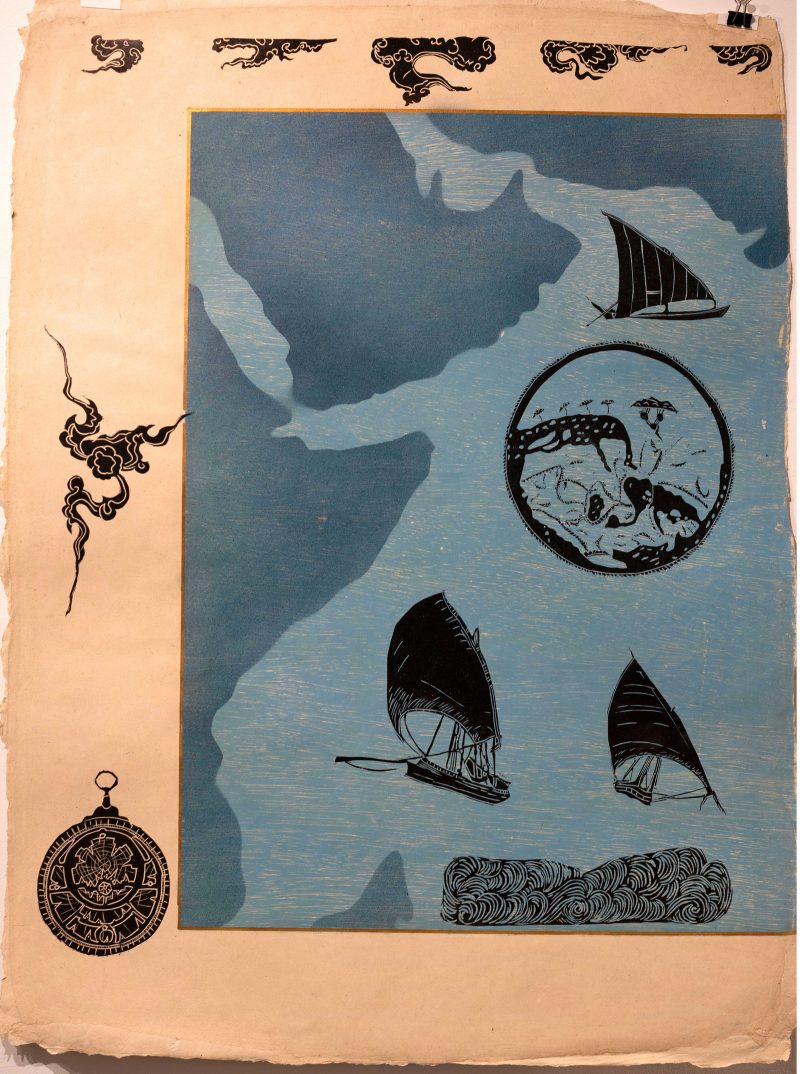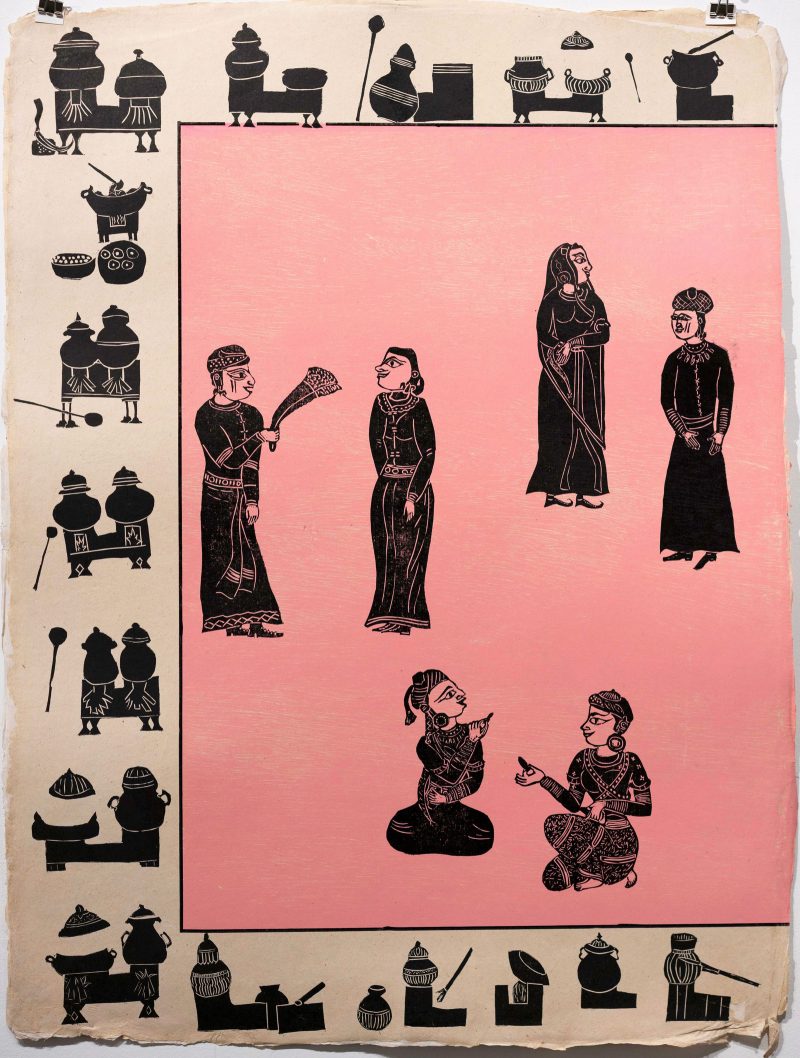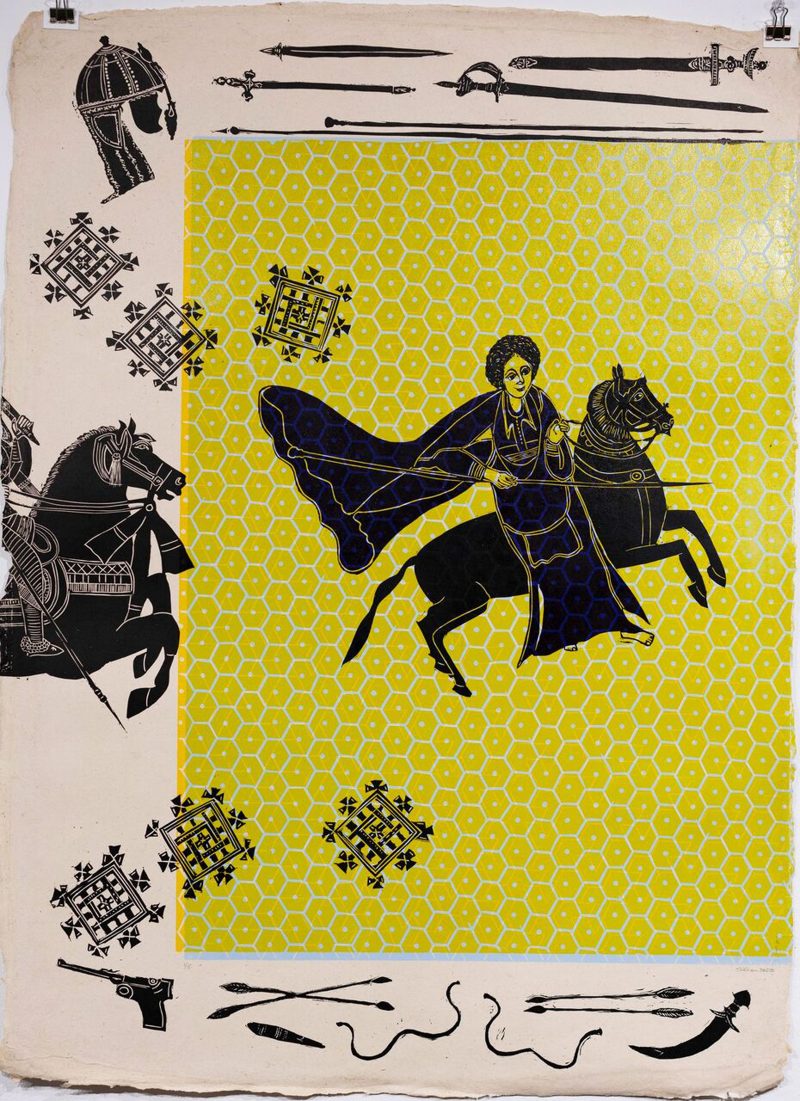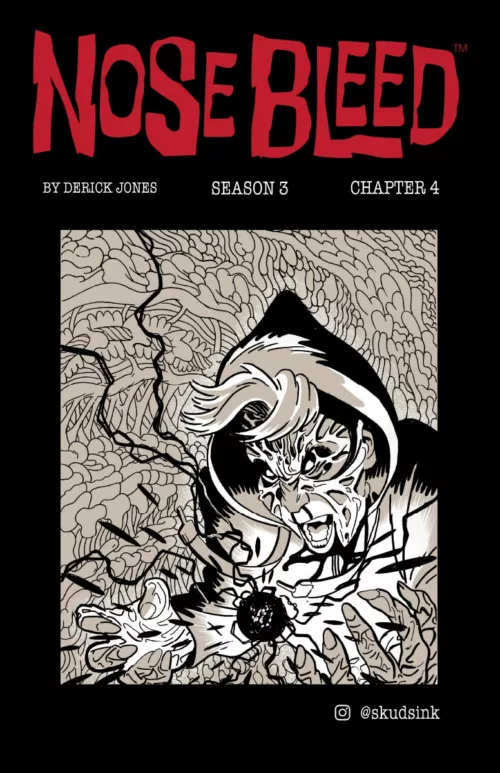
Sarah K Khan’s new body of work, curated by Anna Arabindan-Kesson, and now on virtual display at Twelve Gates Arts, is inspired by a 15th century Indian cookbook entitled Nimatnāma, or Book of Delights.
The cookbook was commissioned by the Shah, Sultan Ghiyas al-Din Shah Khilji, the then-ruler of Malwa — a historical province in west-central India. It was originally written in Persian, and, as Khan explains: “describes aphrodisiacs, medicinals, paans (an after dinner treat made with betel leaf filled with chopped areca nut), meat dishes, attars (fragrant essential oils), and hundreds of other medieval recipes.”
The book also includes a series of illustrations in the Sultanate miniature painting style. Some show the Shah supervising cooking done by maids, and some others show servants milking cows, preparing rice water, distilling perfumes, etc.
Khan, who was born in Pakistan, and moved to the United States in the late 60s, and whose previous works have highlighted the labor of women farmers in India and kitchens run by migrants in Queens, New York, has created a series of linoleum prints which revise those illustrations to portray narratives in which the overlooked and subjugated women of the Shah’s era, women who lived in service to the aspirations and machinations of men, have become fiercely independent people who do not hesitate to stand up to injustice.
Naveena Vijayan: There are over 50 illustrations in the Book of Delights. What do they convey?
Sarah K. Khan: In medieval Islamic culture in South Asia, if you were a ruler of muster, you had an atelier and painters of miniatures who were either Persian and/or trained in the Shirazi (an area in Persia) style of painting. Since the book was written over a course of 44 years, from 1469 to 1505, the artists may have changed with changing times. The earlier illustrations, which depict flowering plants, landscape, and trees, are done in Shirazi style, according to some researchers. In the later ones, you find illustrations depicting women dressed in clothing that’s more related to local Mandu (capital of Malwa) Central Indian culture. These included more elaborately designed clothing and jewelry that may have been worn in the area at that time.

I believe that you have drawn inspiration from some of the illustrations in the book?
I systematically drew every single cup, plate, oven, and basket that’s in the book. There are also illustrations of women and trans women serving the ruler. They are drawn in every shade from white to pink, yellow, light brown to dark brown. But similar to the way Christ looks Chinese in Chinese work and South Indian in South Indian work, the women in the illustrations, though colored in different shades, look Persian, since they were painted by Persian painters. Instead, I drew brown and black people, the whole range, and made them look more like the polyethnic world from which they derived. Thus, the women appear more Central Indian, Central Asian, and African, more like what they might have looked like in the Indian Ocean world. It’s subtle, but it’s my resistance. I am reclaiming, and reinscribing. [Ed. Note: for more information about images in this post, see list at the bottom.]
What else did you find about the Indian Ocean world in your research?
I explored the poly-ethnic make-up of people in those time periods in the Indian Ocean world. It was rich and diverse — Africans, Central Asians, Arabs and Turks were an integral part of that world.
During my research, I relied upon Amitav Ghosh’s book In an Antique Land. Ghosh’s description of slavery in medieval times was very different from the chattel slavery that emerged when the Europeans colonized. It was not better or worse, just different. Of course, there were abuses everywhere, but there were also opportunities to learn languages and rise up in the ranks. For example, Malik Umber came to India as a child slave from Ethiopia and later became a military leader in the Deccan region of India.

Print on traditional handmade Wasli paper
Dimensions Size: 24”x 33” . 2019 Fall. Image courtesy of the artist
Tell me about the three women from history — Queen Bilqis, Razia Sultana and Weyzero Abebach — who you refer to as “sheroes.”
Queen Bilqis, one of the sheroes in my prints, shares her name with my mom – who is a badass. So it was a way to honor her. I wanted someone from the pre-Islam period who represented East Africa and Yemen. Bilqis is thought to be from those places.
The second shero, Razia Sultan, is a Sultanate leader. Her father had decreed her, rather than his sons, to take over his position as the ruler of the Delhi Sultanate in North India. I have shown her on her steed, wearing red, as her father did, to mete out justice.
For the third, I wanted someone contemporary. Abebach is an Ethiopian freedom fighter who fought against fascists in the 1930s. In my prints, based on some moving black and white photos, she is seen carrying a German luger, and then I placed her on a Persian horse racing forward.
What was the art making process like?
I infused every single print, except for the first one, with oils. It’s my way of being playful, and making it multisensorial. For Bilqis I used frankincense; for Abebach, myrrh; and for Razia, since she is from South Asia, I used black pepper, cardamom, cloves and ginger. The smaller prints are made on handmade paper, the larger ones are made on ‘wasli’ — three to four layers of paper adhered to each other and then burnished — that I sourced from a family in Rajasthan that has been making paper for 400 years.
Each print took four to five weeks. The process included drawing figures, drawing on linoleum blocks, cutting, proofing cuts, and printing. For the printing, I collaborated with master printers David Wolfe and Sean Wolfe. I created the works while on residencies at the Blue Mountain Center in New York and the Indigo Arts Alliance in Maine.
You have always used food as an anchor in your projects to talk about social issues. Do you have a favorite cuisine?
I love how food is a conduit to talk about social justice issues, and particularly the invisible, unacknowledged brilliance of women who labor with multiple skills using multiple senses to feed and re-create culture. I often joke that cooks make art at least five times a day, including snacks. I love South Asian, Southeast Asian, Middle Eastern cuisines, but I appreciate anything made with excellent local, fresh ingredients.
Undisciplined Pleasures: Vigilant Defiance, art by Sarah K. Khan, Twelve Gates Arts, online due to COVID-19. More about the artist and her work at her website.
More information about each of the images in this post
1. In the Wake of the Indian Ocean World before European Colonization Sailboats, filled with all manners of people from the East African coast, Arabian peninsula, Indus valley, and the western coasts of South Asia, traversed the Indian Ocean long before European colonization and the introduction of chattel slavery. Skilled African seafarers, in their wooden dhows with lateen sails, steered the coasts and open oceans buoyed by the powerful seasonal Monsoon winds. Arabs, such as al-Idrisi the map maker, long plotted and charted the world; and Ibn Majid, from a family of navigators, developed sophisticated astrolabes to traverse the seas. The Indian Ocean World offered a rich cosmopolitanism, with older and different hegemonies and hierarchies. Size: 24” x 33”
2. Undisciplined Pleasures, Prints 2-6 2. Undisciplined Pleasures: Vigilant Caring, Conversing, Listening, Flirting, Loving I (Orange Blossom) Women reclaim the harem from the Sultan. Much is forbidden (harām) the zanāna/harem. No longer, in the recouped City of Joy. Delicacies simmer on ovens and frame the women-identified couples. Alchemy rules in the midst of pots abundant with all things food and medicine. The duos dedicate themselves to the elegant principles of undisciplined pleasures. They reaffirm what it means to care, converse, listen, and flirt without fear and with infinite love. The couples Uzza and Marjane, Nuha and Manat, Fatima and Gudot transform and are transformed, so love overrules.
3. Vigilant Defiance: To Arms Queen Bilqis (Frankincense) Queen Bilqis hears that the Ethiopian maid-servant stabbed a Deccani Sultan to death in self-defense. Despite numerous documented atrocities, the highbrow privileged male powers gaslight those who accuse this particular sultan of homicidal maniacal ways. Bilqis leaves the security and confines of the women-run and operated zanāna/harem in her City of Joy. She mounts her horse, equipped with her superior spear, to join in the maid-servant’s defense to fight against the elitist nobility, for she knows the machinations of misogynist men. Sisters join her…




